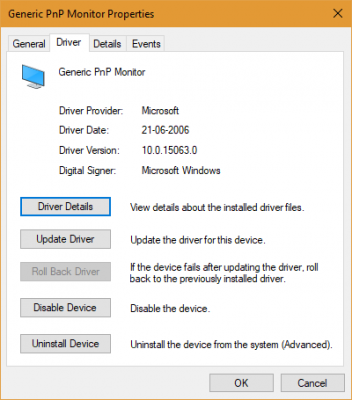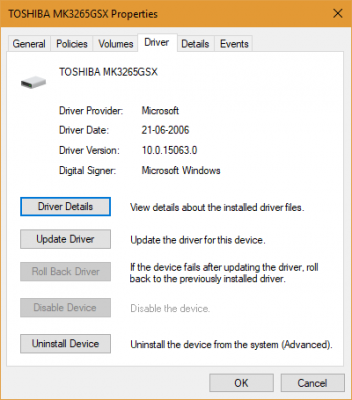If you see, you will find that most of the device drivers on Windows 11/10 are actually dated back to the Windows Vista RTM date, which was June 21, 2006! This can make people wonder if the drivers on their computers are indeed the latest device drivers required for their system to perform optimally.
Windows Vista was released way back in 2006 and still, even after a dozen of years, the device drivers in Windows are dated back to 2006. At first, this seems to be a legit issue and creates uncertainty around how the driver keeps supporting the evolved hardware devices but then you get to notice that the driver version is getting updated with the latest Windows build number.
If you go to Device Manager on your Windows computer and check any device driver details, you’d see the below (in most cases). The Driver date on all Windows-specific drivers is set to 21-06-2006, while the version number is in sync with the build that you’ve installed on your PC.
Windows 11/10 Device Drivers are dated 2006. Why?
zac_l, a Software Engineer with Microsoft, has taken to Reddit to explain this anomaly.
When PNP ranks drivers, it first looks at the hardware ID that the driver matches. If any two drivers match identical hardware, the first tiebreaker is the date of the driver. So if you had a device that could use a built-in driver, but you had installed some custom/OEM driver on your device, every time MS updates our driver, it would overwrite your custom driver because the date is newer than the one you wanted. How do we avoid this? Every driver we ship has the Vista RTM date, regardless of when it was last updated (we update the version number, which is the next tiebreaker if the date is the same). Since only drivers as far back as Vista are compatible with new versions of Windows, every driver should have a date newer than Vista RTM, preserving the driver you installed as the best ranked driver.
So when the drivers are ranked by the system for the underlying device, it sorts them out based on different criteria. First of all, if the driver matches the Hardware ID for the device, it becomes an eligible contender. If two or more drivers matches the hardware specification, the system breaks the tie on the basis of Driver date. If it’s still a tie on driver date, the one with the latest version is chosen.
Now, if you have installed a manufacturer-provided driver for any device, Windows driver would replace it every time it gets updated because it would have a newer driver date. This needs to be avoided if the devices are supposed to run using OEM-based drivers. Hence, in order to avoid this situation where Windows drivers outrank the manufacturer-provided drivers, Microsoft puts an older timestamp (on all of its drivers) regardless of when it was last updated. However, the version number is updated on these Windows drivers so that if there is a tie between a really old OEM driver and a Windows driver, due preference is given to the one provided by Microsoft. With the newer version of Windows
With the newer version of Windows, supported drivers ranges back to the Windows Vista version. That’s why every driver should have a date newer than Windows Vista date which then retains the driver you installed as it is ranked over any Windows-provided driver. So, intentionally backdating the drivers solves the problem for users.
This is one fascinating and uncanny solution to the situation at hand but it all works out really well in the end.

